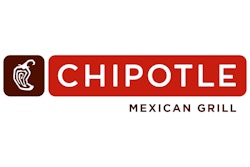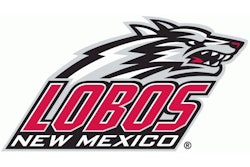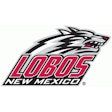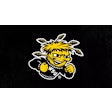
When I owned my clubs — independent, standalone facilities — I took pride in being different from the big chains. We were local, community driven and offered a level of personal service that big box gyms couldn’t match.
But a conversation with a friend, who had founded a successful fitness franchise with over 100 locations, shifted my thinking. He said, “Chris, even as a one-off club, your brand needs to feel big, professional and stable. People trust that. They expect that.”
At first, I resisted. I assumed that being local meant I didn’t have to look polished. In fact, I actively avoided anything that felt too “corporate.” Like a lot of independent operators, I equated corporate with rigid, impersonal and cookie-cutter — everything I didn’t want to be. But the more I observed what the best franchises and chains did well, the more I realized something important: striving for professionalism isn’t the same thing as being corporate. People may love the personal touch, but they also crave consistency, credibility and a brand that feels solid and trustworthy.
Whether you’re a privately owned gym, a boutique studio or a municipal rec center, there’s a lot to learn from the chains that have figured out how to deliver a professional, predictable experience, without losing the human element.
Today, in my consulting work with clubs, studios and rec centers, I see this challenge over and over again: facilities unintentionally coming across as small, scrappy or disorganized, when a few intentional changes could make them look like a polished, professional brand — without sacrificing their heart.
Rather than seeing chains as the enemy, maybe it’s time to study their playbook. Here are three strategies that independently operated facilities should steal from chains, while keeping their soul intact.
1. Brand like a pro
One of the biggest lessons I learned from my franchise friend is that your brand is more than a logo. It’s how you look, feel, sound and show up at every touchpoint. Chains invest heavily in brand consistency — uniform signage, staff attire, email templates, branded handouts and more. Even a single location in a strip mall feels like part of something bigger.
For independents — whether a privately owned gym or a city’s rec center — this doesn’t mean you have to look like Planet Fitness. But it does mean creating your own “mini brand standards guide.” Think about consistent colors, fonts, how your staff members answer the phone and the tone of voice they use during all client interactions.
At a rec center that sought our consultation, we helped the team develop internal brand guidelines — everything from how staff sign emails to the fonts and color palettes used on flyers and signage. That consistency completely changed how the facility was perceived. It suddenly felt more polished, professional and trustworthy.
I’ve seen it in my own experience, too. Early on, we had a strong brand presence on the front of our building, but inside was a different story. Mismatched signs, generic equipment and a lack of clear carry-through diluted the experience. Once we committed to bringing the brand to life throughout the facility — logos on equipment and accessories, matching signage, branded wall graphics and towel bins — it made a real difference. Staff felt more connected to the brand, and members noticed the change almost immediately.
Chains and franchises excel in this area. Their brand identity shows up everywhere: dumbbells, locker tags, floor stickers — you name it. That repetition isn’t just decoration. It’s strategy. There’s a subconscious appeal when your branding is carried through every corner of the facility. It makes your operation appear larger, more established and more significant. Consistency builds credibility, which in turn builds trust.
2. Create operational playbooks
Chains and franchises succeed at scale because they systematize everything. From giving tours to handling complaints, they have scripts and processes that ensure consistency across locations and staff.
Too often, independents leave these things to chance. Staff are left to “figure it out” on their own, which leads to inconsistent — and sometimes awkward — member experiences.
I know this firsthand. When I opened my first club, we had to create everything from scratch. At the beginning, we didn’t have formal processes. We were just trying to keep up. As we grew and evolved, we began to notice gaps. Some staff gave great tours, others didn’t. Some handled issues smoothly, others got flustered. That inconsistency affected the member experience.
The more systematic we got, the better we performed. We created playbooks for front desk procedures, equipment orientations, member onboarding and other key processes. Not only did this improve training and consistency, but it also gave our team the confidence and clarity they needed to thrive.
And let’s be clear. Systems don’t have to scream “corporate.” This isn’t about being stuffy or rigid. It’s about giving your team the tools and structure they need to succeed. When you make things precise and repeatable, staff are more likely to deliver a great experience, every time.
We’re currently working with the leadership team at the aforementioned rec center to set them up for success before they even open their doors this summer. This includes clearly defining job roles and responsibilities and building out standard operating procedures for everything from greeting members and handling guest complaints to conducting locker room checks. The goal is straightforward: to create clarity, consistency and confidence from the outset. When opening day comes, their team will already have the tools and playbooks they need to deliver a great experience, right out of the gate. Well-designed systems don’t take away your culture. They protect it.
3. Market like a chain, act like a neighbor
Chains and franchises are relentless marketers. Promotions, social media ads and referral programs are everywhere. Their message is consistent, their branding is tight, and they show up in every channel that matters. Independents often hesitate, worried they’ll come across as overly salesy (read “corporate”). But here’s the truth: if people don’t know about you, they can’t consider your services, decide to join your club or participate in your programming.
When we owned our clubs, we were very intentional about this. We made sure every piece of marketing — whether it was a postcard, a digital ad or a poster on the wall — looked like it came from a well-funded, nationally recognized brand, with clean design, consistent fonts and strong messaging. At the same time, we paired that professional polish with images of our actual members and staff. It made everything feel authentic and community-rooted, while still projecting a sense of credibility and scale. That balance made a big difference in how people perceived us and whether they acted on what we were promoting.
We’re seeing that same principle come to life at our rec center client that’s opening this summer. They have a small but skilled in-house marketing team who have been a pleasure to work with, and together we’ve created marketing materials that are polished and professional. We’ve highlighted features such as studio-style classes and high-tech equipment, while still maintaining the welcoming feel of a neighborhood gym where everyone belongs.
That balance has paid off. The rec center’s presale campaign has exceeded expectations, and its messaging reflects exactly what the community can expect: a facility that’s modern and professional and deeply rooted in service and connection. The best part? You don’t need a big budget to do this. With tools such as Canva, ChatGPT and a smartphone, smaller organizations can now create marketing materials that rival those of national chains. You don’t have to sell like a chain or franchise, but you should market with their consistency and energy. Be thoughtful and intentional in your approach. Show up often, stay on brand and speak like a trusted neighbor.
You don’t need 100 locations to act like a pro. Chains and franchises have spent decades refining their approach, developing systems, tightening branding and crafting member journeys that build trust and deliver consistency. But independently operated facilities — be they private clubs, boutique studios or municipal rec centers — can absolutely borrow from that playbook to elevate their own game.
The key is to blend the best of both worlds. Adopt the professionalism and polish of a large brand, but deliver it with the personality, flexibility and warmth that only independents can offer. And while many independents recoil at the idea of being too “corporate,” it’s important to remember that corporate doesn’t have to mean cold, impersonal or rigid. Systems and polish don’t erase your identity — they reinforce it. They help you communicate who you are more clearly, confidently and consistently.
At our club, our team was always friendly, and that took us far. But when we paired that casual friendliness with intentional systems, cohesive branding and strategic marketing, everything changed. It wasn’t about losing our personality. It was about leveling up. You don’t have to become a chain, but you can learn from them. Think like the big guys where it counts. Stay human where it matters most. That’s how independents succeed.





































